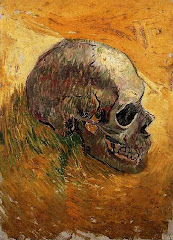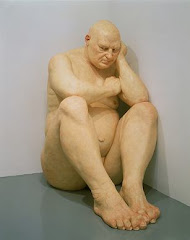REPRINTED FROM APRIL, 1997.
1996 was the year law and order was finally restored in New York City. Statistics reflected a decline in the seven major crime categories. Murders decreased 16.6%, rapes 4.4%, robberies 17.8%, assaults 14%, burglaries 18.2%, grand larcenies 10.5%, and auto thefts 17.3% from the previous year.
Mayor Rudolph Giuliani was giddy enough to proclaim “New York is now at a stage where we have never been safer at any time in the 1990’s, 1980’s, 1970’s. You have to go back to the 1960’s to find a comparable period of time.”
The murder rate fell to 983 - the lowest figure since 1968. This unofficial figure is from the police department. Sometime after Election Day, the medical examiner’s office and the Department of Health will release the official total to the public.
Mayor Giuliani was obsessed with keeping the number of murders under 1,000. He ordered extra patrols during the last days of 1996 to keep the homicide rate at its lowest in almost 30 years. Giuliani believes any number under 1,000 is historically significant, and he doesn’t want some statistician ruining his reelection campaign.
It is likely the number of homicides will exceed 1,000 because the police do not count people who died while in police custody, and people who died in traffic accidents. Some accidents are later ruled homicides after the district attorney’s office has gathered enough evidence for an indictment.
Predictably, the mayor is taking full credit, and will use the reduction in crime as a centerpiece of his reelection campaign. Giuliani ran as a law and order candidate four years ago. The city’s homicide rate peaked at 2,245 in 1990. New Yorkers were appalled. Children were murdered in their own homes as a result of random crossfire. Newspapers were tracking this deadly urban phenomenon with bold headlines.
Presently, the mayor can exclusively claim to have delivered a safer city (Safe in fact if not in perception). Once again, children are more likely to be murdered by a relative, or a by someone they know (Like “Delores Walker, a 10-month-old baby who died of a fractured skull and child abuse” during the final days of 1996.), instead of a stray bullet.
Former Police Commissioner William Bratton was the other person responsible for implementing successful crime fighting strategies, but unfortunately the commissioner resigned. Bratton could not work with an anal retentive, ego maniacal, control freak of a mayor.
The police concentrated on reducing crime by targeting quality of life crimes “on the belief that those who commit small crimes go on to commit big ones.” For example, a person pissing in a doorway, jumping a turnstile, or panhandling is more likely to rob an armored car full of money than a person who has mastered the art of using a toilet, who pays his fare, or works for his money.
This strategy stopped a one-man crime wave last June. A young pianist was nearly beaten to death. Another woman - a Park Avenue dry cleaner - was murdered, and two other women were savagely assaulted. The police solved the crimes through a partial fingerprint at the site of the Park Avenue murder. It was matched with a fingerprint of a turnstile jumper - John Royster. Royster confessed to the crimes while in custody.
Another turnstile hurdler was apprehended. After running “David Livingstone’s name and fingerprints through a computer,” it was discovered he was wanted for the murder of Vernon Jolliff, a Manhattan bartender from Hasbrouck Heights, New Jersey. The deceased picked up the eventual turnstile hurdler “at a now defunct midtown gay bar called Gents.” Livingstone stabbed Jolliff in the latter’s New Jersey apartment.
Good old-fashioned police work led to the arrest of a crack smoking reverend. A miscreant made a deal with police that would have made President Clinton blush. He fingered Reverend Chester LaRue in exchange for a reduced charge. Reverend LaRue was arrested in the rectory with a crack pipe in hand while he was composing the Sunday sermon.
Another crime fighting strategy was targeting “drugs, guns and gangs as the main causes of violence.” Police concentrated in heavy drug and gang areas driving gangsters indoors, consequently eliminating outdoor shootouts.
The police developed a new approach known as COMPSTAT. “COMPSTAT’s twice weekly crime strategy meetings provide a venue in which strategies are developed and accountability for precinct and borough decision-making is insured. It furnishes an arena for testing the mettle of field commanders.” Statistics on crime locations, and time of occurrence are integrated with police deployment. “The specific needs of a precinct are addressed in terms of available resources, priorities, shared information, and the coordination of different police units. For the precincts, decentralized decision - making means more flexibility, improved anticipation and a faster response to community - specific problems.”
Criminologists have different theories on the reduction of crime. John Laub, a professor of criminology at Northwestern University, argues, “Fighting crime is like combating an epidemic... Acts of violence lead to further acts of violence, creating a contagion effect and a sudden jump in the crime rates that is hard to explain. This may be what happened when the advent of crack cocaine in the mid-1980’s produced a sudden, huge increase in violence.”
Professor James Q. Wilson of UCLA argues, “the adult homicide rate has been declining since 1981, and that the only reason the homicide rate rose in the late 1980’s was that juvenile violence tripled with the advent of crack. This form of cocaine brought youths into the drug trade and created a demand for automatic handguns. Many teenagers suddenly wanted a gun for safety or prestige. Unlike adult crime, teenage crime follows a fad-like pattern, where the changes come quickly. Just as teenagers’ taste in clothing are driven by trends, so was their jump into crack culture.” Children with guns act like cowboys and will fire their weapons at the slightest provocation.
Professors Laub and Wilson argue younger children are not lured into the drug culture “when they [see] the cost in death, hospitalization and prison time.”
Geoffrey Canada, the president of the Rheelen Centers for Children and Families in Harlem, detected the change in attitudes among teenagers. “The toll of death in their families, tougher police tactics and stepped-up efforts by neighborhood groups to combat violence have combined to reduce involvement in the drug trade... The drug market is still there, but it is more stable now, back in the hands of older people who treat it like a business.”
Drug habits have an impact on the murder rate. Marijuana and heroin use are rising, especially among young people. “While the use of those drugs is obviously troubling, it is rightly seen as less associated with a reckless, gun-toting lifestyle than crack.”
Medical technology also reduced the homicide rate. “The development of hospital trauma centers has saved more gunshot victims from death.”
Immigration patterns also have an impact on the reduction of crime in the city. “The new immigrants are mainly family-oriented, ambitious people with a disciplined approach to family life and work that stabilizes communities.”
Mayor Giuliani will insist police work reduced the crime rate, and the crackdown on quality of life crimes is the catalyst towards a relatively crime free society. Maintaining law and order will be the theme of the 1997 mayoral campaign.
A courageous opponent could claim that the mayor’s impact on crime reduction is negligible at best. “The number of killings and felonies actually began decreasing in 1991 and 1989 although at a much lesser rate.” In fact, “the largest drop in the murder rate occurred in 1994, and the administration’s new COMPSTAT strategies did not even begin until halfway through the first year.”
In addition, police response time to 911 calls increased from 7.7 minutes to 9.1 minutes during the Giuliani administration.
Moreover, currently 21% of the total police force is on foot patrol - a decrease from 25% before the mayor took office. Giuliani brags about hiring more police officers, but there are fewer cops on the streets than the previous administration.
Giuliani will respond in his usual understated manner. He will call his opponent an idiot, but will insist that New York is safer thanks to his inspired leadership.
REPRINTED FROM APRIL, 1997
Saturday, May 13, 2006
Subscribe to:
Post Comments (Atom)











No comments:
Post a Comment